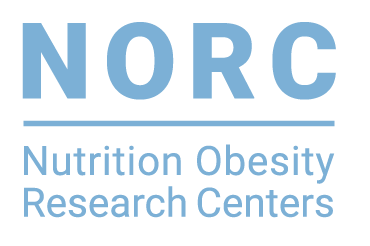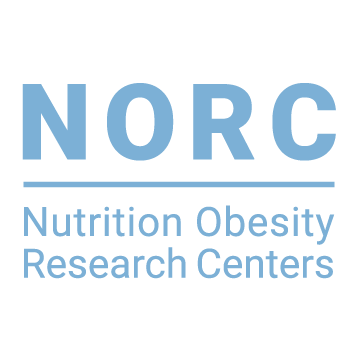Tag: University of Washington
NORC/CORA Annual Symposium: From Cells to Society: Fostering Communities Involved in Obesity and Nutrition Research
NORC/CORA Annual Symposium: From Cells to Society: Fostering Communities Involved in Obesity and Nutrition Research December 9, 2021, 9:15 am-1:00 pm PST Half-Day Symposium Register at: diabetesmetabseminars.com
Categories: Featured News Tags: University of WashingtonFunctional Identification of a Neurocircuit Regulating Blood Glucose
Abstract Previous studies implicate the hypothalamic ventromedial nucleus (VMN) in glycemic control. Here, we report that selective inhibition of the subset of VMN neurons that express the transcription factor steroidogenic-factor 1 (VMNSF1neurons) blocks recovery from insulin-induced hypoglycemia whereas, conversely, activation of VMNSF1neurons causes diabetes-range hyperglycemia. Moreover, this hyperglycemic response is reproduced by selective activation of VMNSF1fibers projecting to the anterior bed nucleus of the stria terminalis (aBNST), but not to other brain areas innervated by VMNSF1neurons. We also report that neurons in the lateral parabrachial nucleus (LPBN), a brain area that is also implicated in the response to hypoglycemia, make … Read More »
Categories: Publications Tags: University of WashingtonFoxO1 Integrates Direct and Indirect Effects of Insulin on Hepatic Glucose Production and Glucose Utilization
Abstract FoxO proteins are major targets of insulin action. To better define the role of FoxO1 in mediating insulin effects in the liver, we generated liver-specific insulin receptor knockout (LIRKO) and IR/FoxO1 double knockout (LIRFKO) mice. Here we show that LIRKO mice are severely insulin resistant based on glucose, insulin and C-peptide levels, and glucose and insulin tolerance tests, and genetic deletion of hepatic FoxO1 reverses these effects. (13)C-glucose and insulin clamp studies indicate that regulation of both hepatic glucose production (HGP) and glucose utilization is impaired in LIRKO mice, and these defects are also restored in LIRFKO mice corresponding … Read More »
Categories: Publications Tags: University of WashingtonMeasurement by a Novel LC-MS/MS Methodology Reveals Similar Serum Concentrations of Vitamin D-Binding Protein in Blacks and Whites
Abstract Vitamin D deficiency is associated with poor bone health and other adverse health outcomes; however, the associations are greatly attenuated in black vs white individuals. One possible explanation for this attenuation is different concentrations of bioavailable vitamin D metabolites in plasma, which are estimated with equations that include the total concentration of vitamin D binding globulin (VDBG) and haplotype-specific dissociation constants. We developed a method to quantify VDBG with LC-MS/MS that could also identify the haplotypes/isoforms of VDBG present. We validated the method according to recent recommendations for publications of biomarker studies. We determined serum VDBG concentrations in samples … Read More »
Categories: Publications Tags: University of WashingtonRadiologic Evidence that Hypothalamic Gliosis is Associated with Obesity and Insulin Resistance in Humans
Abstract This study used quantitative magnetic resonance imaging (MRI) to test whether mediobasal hypothalamic (MBH) gliosis is associated with obesity and insulin resistance in humans. Sixty-seven participants underwent a fasting blood draw and MRI. Cases with radiologic evidence of MBH gliosis (N = 22) were identified as the upper tertile of left MBH T2 relaxation time and were compared to controls (N = 23) from the lowest tertile. In a separate postmortem study, brain slices (N = 10) through the MBH were imaged by MRI and stained for glial fibrillary acidic protein (GFAP). Key Findings In all participants, longer T2 relaxation time in the left MBH … Read More »
Categories: Publications Tags: University of WashingtonEvidence Against Hypothalamic-Pituitary-Adrenal Axis Suppression in the Antidiabetic Action of Leptin
Abstract Leptin administration restores euglycemia in rodents with severe insulin-deficient diabetes, and recent studies to explain this phenomenon have focused on the ability of leptin to normalize excessive hypothalamic-pituitary-adrenal (HPA) axis activity. Here, we employed a streptozotocin-induced rat model (STZ-DM) of uncontrolled insulin-deficient diabetes mellitus (uDM) to investigate the contribution of HPA axis suppression to leptin-mediated glucose lowering. Specifically, we asked if HPA axis activation is required for diabetic hyperglycemia, whether HPA axis normalization can be achieved using a dose of leptin below that needed to normalize glycemia, and if the ability of leptin to lower plasma glucocorticoid levels is … Read More »
Categories: Publications Tags: University of WashingtonCan NMR Solve Some Significant Challenges in Metabolomics?
Abstract The field of metabolomics continues to witness rapid growth driven by fundamental studies, methods development, and applications in a number of disciplines that include biomedical science, plant and nutrition sciences, drug development, energy and environmental sciences, toxicology, etc. NMR spectroscopy is one of the two most widely used analytical platforms in the metabolomics field, along with mass spectrometry (MS). NMR’s excellent reproducibility and quantitative accuracy, its ability to identify structures of unknown metabolites, its capacity to generate metabolite profiles using intact bio-specimens with no need for separation, and its capabilities for tracing metabolic pathways using isotope labeled substrates offer … Read More »
Categories: Publications Tags: University of WashingtonMurine Norovirus Infection Variably Alters Atherosclerosis in Mice Lacking Apolipoprotein
Abstract Macrophages play a key role in the development of atherosclerosis. Murine noroviruses (MNV) are highly prevalent in research mouse colonies and infect macrophages and dendritic cells. Our laboratory found that MNV4 infection in mice lacking the LDL receptor alters the development of atherosclerosis, potentially confounding research outcomes. Therefore, we investigated whether MNV4 likewise altered atherosclerosis in ApoE(-/-) mice. In the presence of oxidized LDL, MNV4 infection of ApoE(-/-) bone marrow-derived macrophages increased the gene expression of the inflammatory markers inducible nitric oxide synthase, monocyte chemoattractant protein 1, and IL6. In addition, proteins involved in cholesterol transport were altered in … Read More »
Categories: Publications Tags: University of WashingtonThyroglobulin (Tg) Testing Revisited: Tg Assays, TgAb Assays, and Correlation of Results With Clinical Outcomes
Abstract The objective of the study was to perform analytical and clinical evaluations of two Tg-MS assays in comparison with immunometric Tg assays (Tg-IAs) and Tg RIAs (Tg-RIAs) in a cohort of thyroid cancer patients. Citation Netzel BC, Grebe SK, Carranza Leon BG, Castro MR, Clark PM, Hoofnagle AN, Spencer CA, Turcu AF, Algeciras-Schimnich A. Thyroglobulin (Tg) Testing Revisited: Tg Assays, TgAb Assays, and Correlation of Results With Clinical Outcomes. J Clin Endocrinol Metab. 2015 Aug;100(8):E1074-83. PMID: 26079778; PMCID: PMC4524993. Read More: The Journal of Clinical Endocrinology & Metabolism Research Details Research Center: University of Washington
Categories: Publications Tags: University of WashingtonM2 Macrophage Polarization Mediates Anti-inflammatory Effects of Endothelial Nitric Oxide Signaling
Abstract Endothelial nitric oxide (NO) signaling plays a physiological role in limiting obesity-associated insulin resistance and inflammation. This study was undertaken to investigate whether this NO effect involves polarization of macrophages toward an anti-inflammatory M2 phenotype. Mice with transgenic endothelial NO synthase overexpression were protected against high-fat diet (HFD)-induced hepatic inflammation and insulin resistance, and this effect was associated with reduced proinflammatory M1 and increased anti-inflammatory M2 activation of Kupffer cells. In cell culture studies, exposure of macrophages to endothelial NO similarly reduced inflammatory (M1) and increased anti-inflammatory (M2) gene expression. Similar effects were induced by macrophage overexpression of vasodilator-stimulated … Read More »
Categories: Publications Tags: University of Washington
